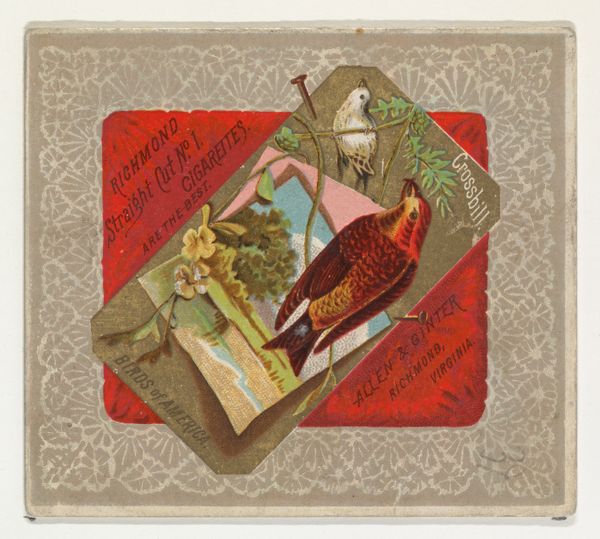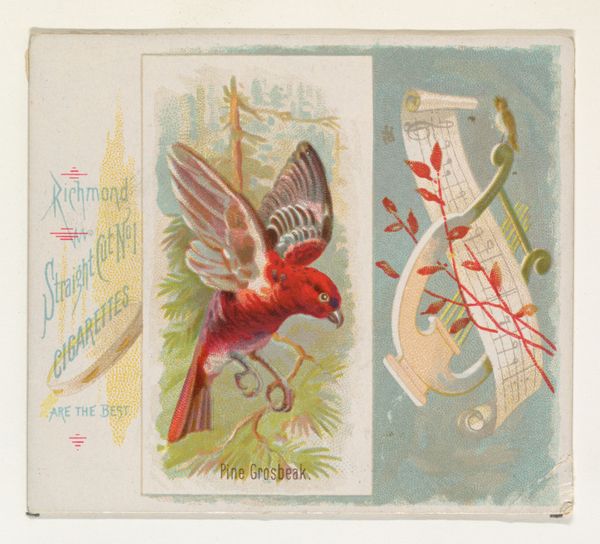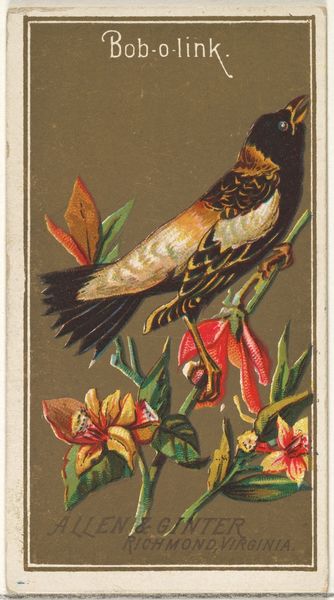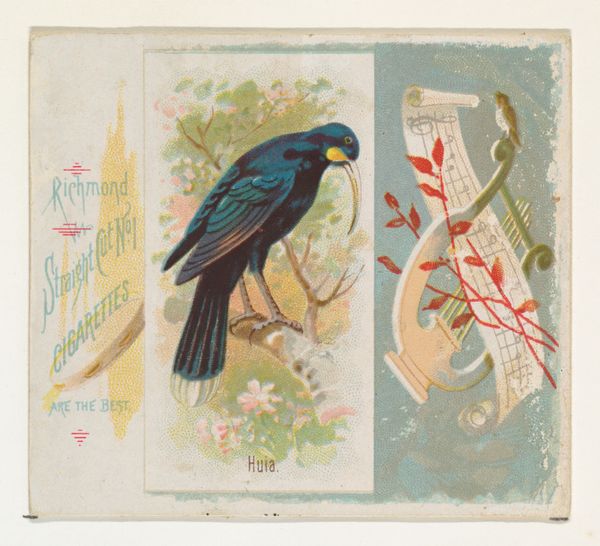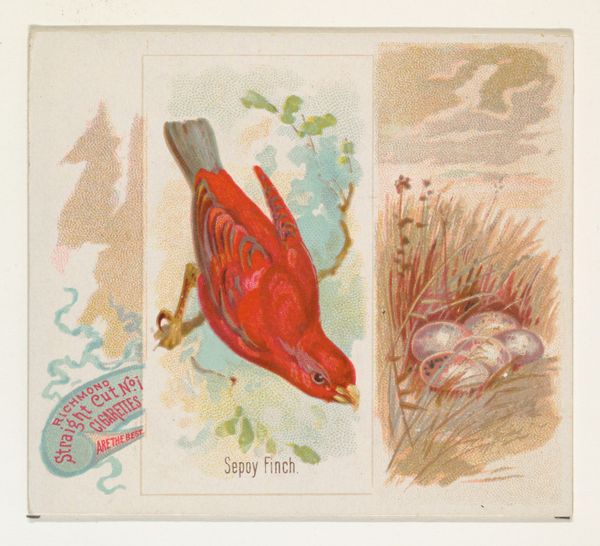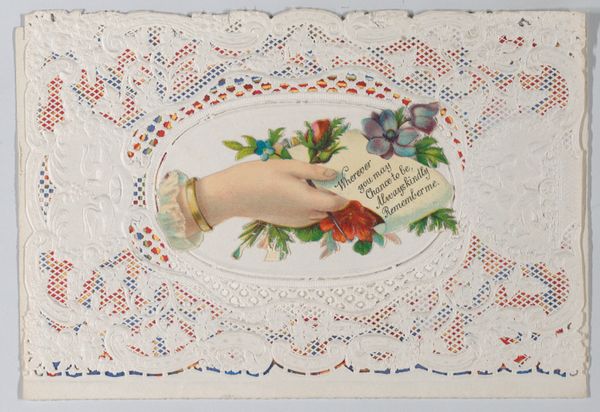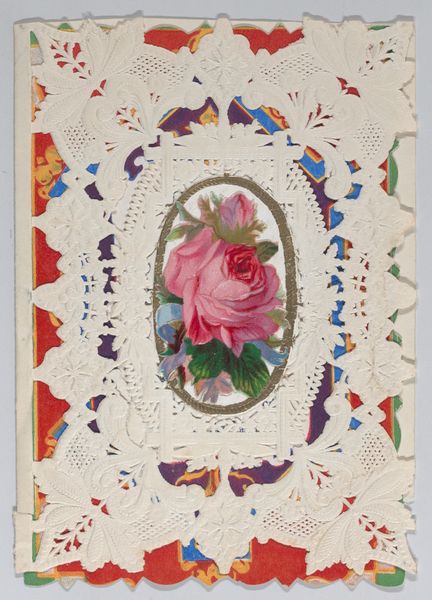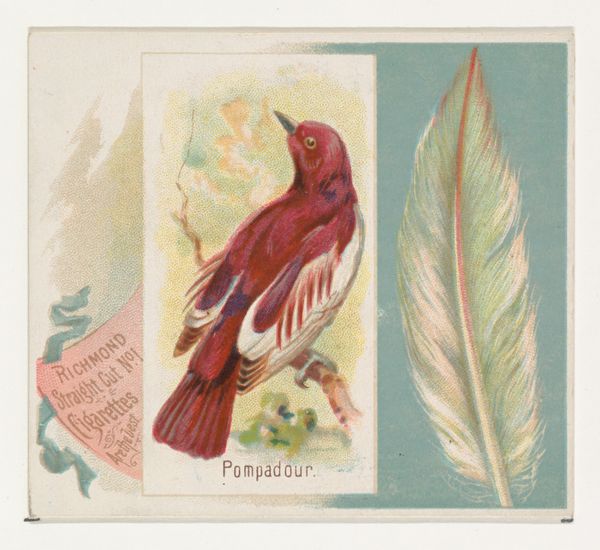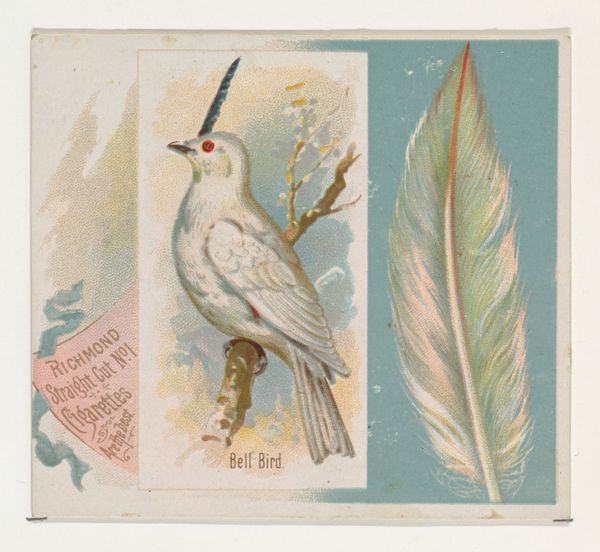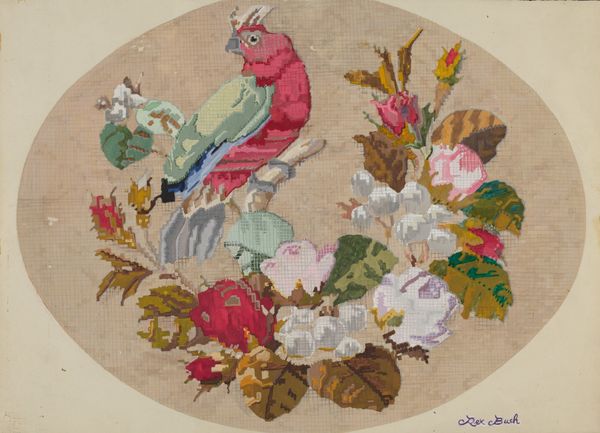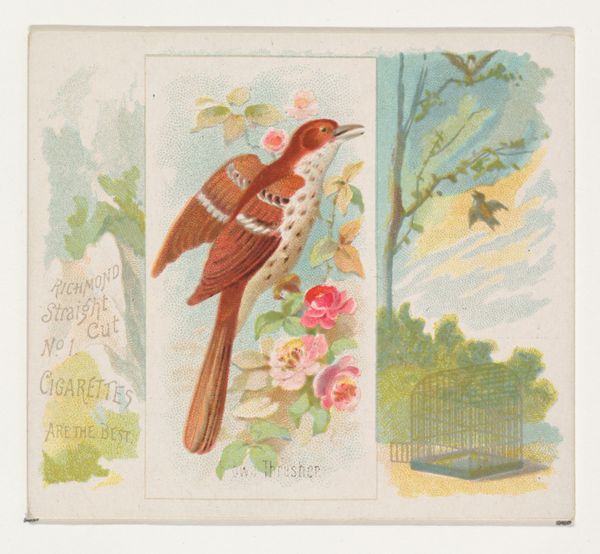
Bob-o-link, from the Birds of America series (N37) for Allen & Ginter Cigarettes 1888
0:00
0:00
#
water colours
# print
#
naive art
#
earthenware
#
watercolour illustration
#
decorative-art
#
decorative art
#
watercolor
Dimensions: Sheet: 2 7/8 x 3 1/4 in. (7.3 x 8.3 cm)
Copyright: Public Domain
Curator: Here we have a small but fascinating piece from 1888, “Bob-o-link, from the Birds of America series (N37) for Allen & Ginter Cigarettes.” It’s currently held at the Metropolitan Museum of Art. What are your initial impressions? Editor: It’s charming, with that slightly flattened perspective typical of the decorative arts. I’m immediately drawn to the way the bird and foliage are presented against these clearly defined geometric blocks. The colour palette is also worth observing with earthy browns contrasted to a fiery red and hints of verdant greens. Curator: Absolutely, that flatness draws heavily from the aesthetics of Japonisme, popular at the time, but consider this within the context of American industrialization. Allen & Ginter was one of the first to use colorful images to sell cigarettes. Editor: Precisely! It functions, from a formal perspective, as an exercise in composition and color harmony, albeit with a clear commercial motive. I see a deliberate placement of elements, using contrast, that directs the eye and maximizes the impact of this petite format. The textures created by watercolor are remarkable. Curator: This form of advertising played into late 19th-century collecting manias, particularly the fetishization of ornithology. Cigarette cards were inserted into packs, encouraging consumption while simultaneously reinforcing class distinctions and a narrative of natural abundance achieved through colonialism and industry. There are socio-political implications deeply embedded into this seemingly simple, innocent picture. Editor: Agreed, these associations of commodity and status existed in tandem. Still, focusing on form, observe how the overall symmetry stabilizes the work; there’s an inherent balance. This, when fused with delicate, naturalistic depictions of the bird and foliage offers more than mere commercial intentions. Curator: Its symmetry cannot conceal the ideologies promoted, the ways it helped construct cultural ideas. Looking closely, we see the inscription reads Richmond Straight Cut Number 1 cigarettes – its presence serves as constant advertisement within what should be, supposedly, a nature picture. Editor: Indeed, the layers peel back to reveal greater meaning. On a final note, there’s such sophistication in the use of watercolor wash and careful linework when rendering the titular bird in its habitat. Curator: Yes, by viewing this through various perspectives and using our knowledge as guides, we can start to decipher how the aesthetic beauty of art might often stand juxtaposed against underlying ideological positions.
Comments
No comments
Be the first to comment and join the conversation on the ultimate creative platform.
